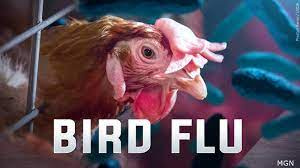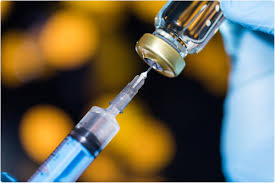Lab-Grown Meat Moves Closer To American Dinner Plates
Why the unending push for lab-grown meat? Technocrats and Transhumanists are bent on getting delivery systems to the human body and food is a logical choice. The old adage, “you are what you eat” comes to mind. Lab-grown meat can be modified to include any life-altering material that might affect bodily systems. Naturally-grown meat is not accessible.
Once the stuff of science fiction, lab-grown meat could become reality in some restaurants in the United States as early as this year.
Executives at cultivated meat companies are optimistic that meat grown in massive steel vats could be on the menu within months after one company won the go-ahead from a key regulator. In a show of confidence, some of them have signed up high-end chefs like Argentine Francis Mallmann and Spaniard José Andrés to eventually showcase the meats in their high-end eateries.
But to reach its ultimate destination – supermarket shelves – cultivated meat faces big obstacles, five executives told Reuters. Companies must attract more funding to increase production, which would enable them to offer their beef steaks and chicken breasts at a more affordable price. Along the way, they must overcome a reluctance among some consumers to even try lab-grown meat.
Cultivated meat is derived from a small sample of cells collected from livestock, which is then fed nutrients, grown in enormous steel vessels called bioreactors, and processed into something that looks and tastes like a real cut of meat.
Just one country, Singapore, has so far approved the product for retail sale. But the United States is poised to follow. The U.S. Food and Drug Administration (FDA) said in November that a cultivated meat product – a chicken breast grown by California-based UPSIDE Foods – was safe for human consumption.
UPSIDE is now hoping to bring its product to restaurants as soon as 2023 and to grocery stores by 2028, its executives told Reuters.
UPSIDE still needs to be inspected by the U.S. Department of Agriculture’s Food Safety and Inspection Service and get sign-off from the agency on its labels. A USDA FSIS spokesperson declined to comment on its inspection timeline.
`SLAUGHTERLESS HOUSE`
At UPSIDE’s facility in Emeryville, California, lab coat-clad workers were seen poring over touch screens and monitoring giant vats of water mixed with nutrients during a recent Reuters visit. Meat is harvested and processed in a room that chief executive officer Uma Valeti calls the “slaughterless house,” where it is inspected and tested.
Reuters reporters were served a sample of UPSIDE’s chicken during the visit. It tasted just like conventional chicken when cooked, though was somewhat thinner and had a more uniform tan color when raw.
UPSIDE worked with the FDA for four years before receiving the agency’s green light in November, Valeti told Reuters.
“It’s a watershed moment for the industry,” he said.
California-based cultivated meat company GOOD Meat already has an application pending with the FDA, which has not been previously reported. Two other companies, Netherlands-based Mosa Meat and Israel-based Believer Meats, said they are in discussions with the agency, company executives told Reuters.
The FDA declined to provide details of pending cultivated meat applications but confirmed it is talking to multiple companies.
Regulatory approval is just the first hurdle for making cultivated meat accessible to a broad swath of consumers, executives at UPSIDE, Mosa Meat, Believer Meats, and GOOD Meat told Reuters.
The biggest challenge companies face is growing the nascent supply chain for the nutrient mix to feed cells and for the massive bioreactors required to produce large quantities of cultivated meat, executives said.
For now, production is limited. UPSIDE’s facility has the capacity to churn out 400,000 pounds of cultivated meat per year – a small fraction of the 106 billion pounds of conventional meat and poultry produced in the United States in 2021, according to the North American Meat Institute, a meat industry lobby group.
If the companies cannot get the funds needed to scale up production, their product may never reach a price point where it can compete with conventional meat, said GOOD Meat co-founder Josh Tetrick.
“Selling is different than selling a lot,” Tetrick said. “Until we as a company and other companies build large-scale infrastructure, this is going to be very small scale.”



